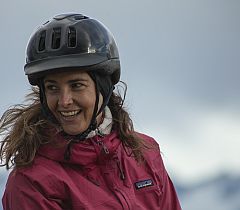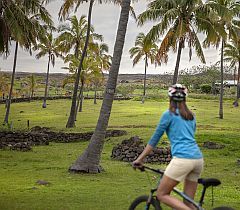The story of a dream: the creation of the Patagonia National Park and the important conservation legacy of Douglas and Kristine Tompkins
In December 2018, the Patagonia National Park was created, a majestic green lung located in the south of the Aysén Region, whose biodiversity and conservation work have been worthy of admiration. The incredible history of the creation of this protected area is marked by a serious commitment to the protection of nature with a vision of the future and great teamwork led by Douglas and Kristine Tompkins, placing it as one of the most important ecological restoration projects of Chile.
By Ladera Sur.

Between the wonderful communes of Chile Chico and Cochrane, in the Aysén Region, there are 304,527.75 hectares of vast landscapes that make up the Patagonia National Park, which is made up of Valle Chacabuco and the old national reserves of Tamango and Jeinimeni. .
The creation of this large protected area was marked by the donation of more than 80 thousand hectares corresponding to Valle Chacabuco to the State of Chile, carried out in 2018 by the Rewilding Chile Foundation, formerly Tompkins Conservation Chile, an entity founded by Douglas (1943-2015) and Kristine Tompkins, renowned entrepreneurs dedicated to conservation; in order to ensure its recovery and protection.
This is how this unique place in the world is full of history, ecological restoration and important biodiversity that has benefited from a committed vision of the future of nature and a clear interest in granting Chile a conservation legacy, so that species such as the huemul (Hippocamelus bisulcus), which is in danger of extinction, have the possibility of being protected in their territory.
The beginnings of a pioneering conservation project
It was the year 1995 and Douglas Tompkins together with his wife Kristine were traveling by car through Patagonia when they set their eyes on Estancia Valle Chacabuco, a site that contained some precious Nothofagus forests, an important Patagonian steppe, full wetlands of life and dream landscapes that were being used since the beginning of the 20th century as a cattle ranch.
“Years before they bought the land, Douglas and Kris drove across from Argentina and even camped on the shore of one of the lagoons near the highway. He set his eyes there, and at that time he spoke with the owner and told him that if one day he wanted to sell, they were interested,” recalls Ingrid Espinoza, Director of Conservation for the Rewilding Chile Foundation, which participated in the acquisition of Valle de Chacabuco and, later, in the procedures for the creation of the Patagonia National Park.
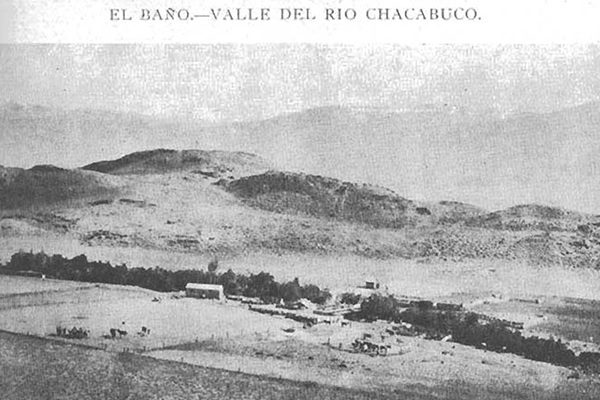
Some time later, after almost 100 years of livestock history, the 70,000 hectare ranch was acquired in 2004 by Conservación Patagonica, an organization led by the Tompkins family, together with the support of various donors, in order to start an ambitious project of recovery, immediately mobilizing an entire technical team to carry out an evaluation and subsequent intervention in the sector.
Thus, gradually, they began to sell the cattle from the old ranch, they were eliminating hundreds of kilometers of pasture fences through volunteer work, an education program was created to bring the conservation project closer to the local community and, in parallel, they began to monitor the wildlife in the area, especially the representative species of the valley such as the huemul, but also the guanacos (Lama guanicoe), the puma (Puma concolor), the condor (Vultur gryphus) and the ñandú (Rhea pennata), among other species.
“In the beginning, we worked every summer with teams of volunteers to support the elimination of pasture fences and the monitoring of wildlife, beginning the work with the monitoring of the huemul as an iconic species that is in danger of extinction, to thus improve its population. A natural balance was generated in the ecosystem that took about 15 years,” says Espinoza.
For the foundation, the value and impulse of ecological restoration are contained in the word rewilding, which they define as “helping nature to heal, restoring space to wildlife, on land and in the sea, through restoration of ecosystems on a large scale”, a concept that characterizes this iconic conservation project at a national and international level.
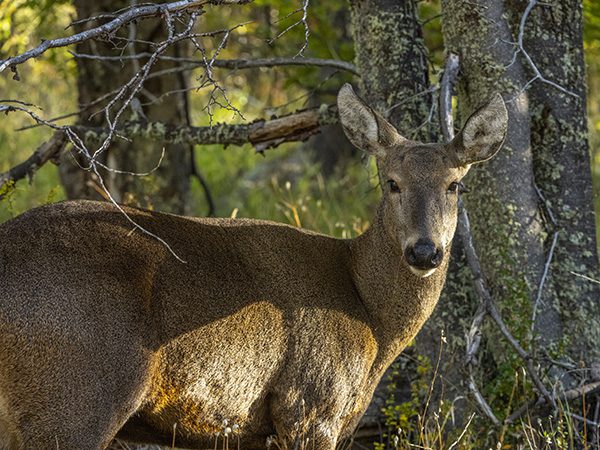
Restoration of wildlife and interaction with the territory
By gradually removing the fences, the behavior of the Chacabuco Valley wildlife began to change, since, by increasing the unfragmented surface, in addition to a notable recovery of the vegetation, it allowed the 370 types of vascular plants and the different animals will begin to move freely around the area.
“We managed to see the guanacos for the first time in places that had previously been excluded, the few huemules that were there were able to access new areas of the forest, and the pumas began to be easier to observe in groups. Somehow, we see that there are results that are highly unsuspected and that we never thought we would see in 2005”, explains Cristián Saucedo, veterinarian and Director of the Wildlife Program of the Rewilding Chile Foundation.
Generally, pumas had been classified as solitary animals, however, the group behavior that they have shown in the last 15 years of the ecological restoration project, have come to rethink several questions in this regard, since they have been observed at more than eight specimens feeding on the same prey, an unusual behavior.
Thanks to the monitoring of wildlife, they were able to identify that more than 90% of the puma’s main diet was guanacos and, this detail, together with the implementation of a herd protection dog program, helped to mitigate the fear of the community about the big predatory cat.
“I feel that we managed to show that we were not against livestock, what we wanted to promote was that for livestock to be responsible and sustainable, it had to be in harmony with the environment in which it operates. Thus, looking for changes in livestock practice to live with predators was an efficient, economically viable and effective strategy”, adds Saucedo.
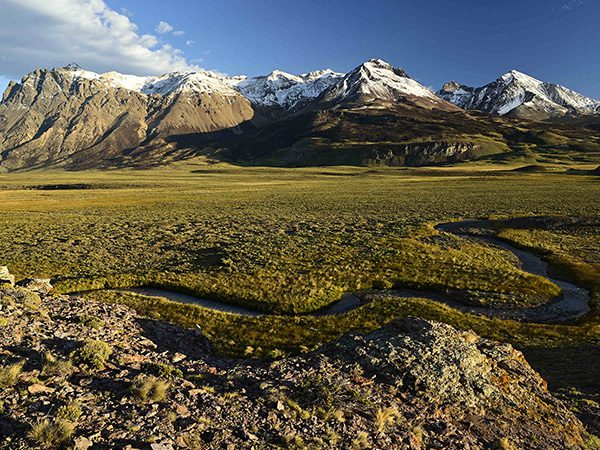
Also, from 2015 to today, the Huemul National Corridor (CNH) was implemented, a public-private project whose objective was to restore the populations of the species through the creation of biological corridors, a project that is maintained to date and that it has expanded to other key areas of Patagonia, such as the northern sector of the Pumalín Douglas Tompkins National Park, the Futaleufú National Reserve and the Las Horquetas area, adjacent to the Cerro Castillo National Park; all areas belonging to the Route of the Parks of Patagonia.
In the same way, a key point with respect to the community relationship had to do with when the process of buying the ranch began, since the foundation proposed to the workers to keep a job on the site, managing to observe until the day of today how some former ranchers have been monitoring wildlife for almost 15 years.
“The Patagonian culture is complementary to the protection of the environment, since the human being is a key piece in rewilding. When we talk about tourism and nature, as a consequence of conservation, we also talk about associated communities and protected areas to counteract the climate crisis and the extinction of species”, adds the director of the Wildlife Program.
Setting a precedent in conservation: the donation of land to the State of Chile and the creation of the Patagonia National Park
After years of great efforts to increase and improve the quality of life of wildlife in Patagonia, in 2014 Douglas and Kristine Tompkins made a presentation at the Palacio de la Moneda regarding the project of more than 400,000 hectares that they intended to donate as foundation, among which was the Valle de Chacabuco.
“Each of the projects that we implement, we did so based on the eyes and conservation gaze of Douglas. After his death, the Route of the Parks project had already started, and in March 2017 we signed a protocol agreement with the government, where both parties committed to creating collaborative work around various projects of conservation, among which was the Patagonia National Park”, comments Ingrid Espinoza, the Director of Conservation of Rewilding Chile.

After this commitment, they submitted to the Ministry of National Assets of Chile the offer to donate the land, providing all kinds of background information, among which the only requirement implemented by the Tompkins family foundation was that the donated land should be only used as a national park.
“These processes are long, but in January 2018 we signed the decrees, and then in December of that same year it was officially declared a Patagonia National Park. The proposal was incredible, perfect, almost like the original idea and better”, says Espinoza.
So it was, how the area in the process of ecological restoration carried out by Rewilding Chile became part of a collaborative work that continues to this day with the National Forestry Corporation (CONAF), accompanying the institution side by side to continue working with future management plans, wildlife programs and joint species monitoring.
“What seemed like a dream or a theoretical project, and even something that some doubted would materialize, to have achieved it was a tremendous milestone. Behind the creation of this park was the work of many Chileans, foreigners, volunteers, professionals, and technicians. I see with great eyes that the Patagonia National Park is a reality and that it is fulfilling its multiple objectives related to the conservation of ecosystems, biodiversity, threatened species, public use, the generation of information and the link with the communities”, says Cristián Saucedo.
